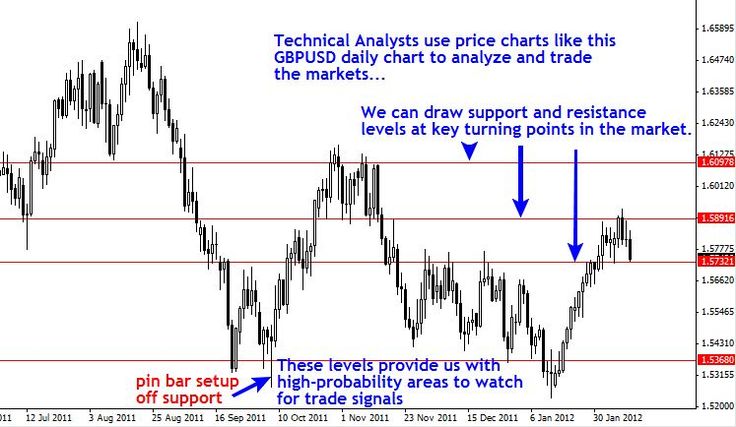
You can enroll in Regions online banking by providing your email address, phone number, and a confirmation link. You can then log in to Regions' online banking account. You can now access your accounts online and transfer funds to your account without ever leaving your house. Follow the links on the website for instructions to sign up. It is simple and free. After completing your enrollment, you will be directed to the next step.
How do I enroll in online banking
You may be able to sign up for its online banking service if you have an account with Regions bank. For this to happen, you will need to enter your Social Security Number, your email address, as well as a phone number. These numbers are not required. However, you have other options. For example, visiting a local bank branch. Although online banking is free, certain products and services may cost extra, such as Zelle. You must be at least 18 to enroll in Regions online bank.

You can bank online from anywhere you like. You can view your bank statements, manage your money, print them, and get documents electronically. Regions' online banking is a great way to manage your small business finances. You can view all your financial statements, pay bills and track your accounts from one central location. The benefits of online banking are numerous, and you will find it beneficial to have this type of service.
Online banking offers many advantages
With Regions Online Banking, you can do your banking from the comfort of your own home. You can track all your account activity, and your balance, with this service. To track deposits, withdrawals and transactions, you can create alerts. You can set dollar thresholds for various activities. This will allow you to keep track of your business' finances. It has never been easier to manage your company's finances.
Regions' online or mobile banking services make it easy to have access to your accounts, no matter if you bank on your computer or mobile device. Access to 1,900 ATMs across the Regions area is free so you can always get your money. Plus, with Regions Online Banking and mobile, you can earn Cashback Rewards on eligible purchases made with your Now Card and CheckCard. The financial tools and calculators available at Insights by regions make managing your finances easier than ever.

Limitations to online banking
Regions online bank will help you manage your finances. You'll be impressed by the user-friendly system and excellent customer service. You can transfer money from one account to another, pay bills online, and even deposit checks on your cell phone! Regions online banking has its limitations. However, they offer outstanding customer service. However, the online banking system Regions has its limitations. Let's review some of them.
FAQ
Should I make an investment in real estate
Real Estate Investments can help you generate passive income. However, you will need a large amount of capital up front.
Real estate may not be the right choice if you want fast returns.
Instead, consider putting your money into dividend-paying stocks. These stocks pay you monthly dividends which can be reinvested for additional earnings.
Do I really need an IRA
A retirement account called an Individual Retirement Account (IRA), allows you to save taxes.
You can make after-tax contributions to an IRA so that you can increase your wealth. These IRAs also offer tax benefits for money that you withdraw later.
IRAs are especially helpful for those who are self-employed or work for small companies.
Many employers also offer matching contributions for their employees. If your employer matches your contributions, you will save twice as much!
How can I manage my risks?
Risk management means being aware of the potential losses associated with investing.
For example, a company may go bankrupt and cause its stock price to plummet.
Or, a country's economy could collapse, causing the value of its currency to fall.
You can lose your entire capital if you decide to invest in stocks
This is why stocks have greater risks than bonds.
Buy both bonds and stocks to lower your risk.
This will increase your chances of making money with both assets.
Spreading your investments across multiple asset classes can help reduce risk.
Each class has its unique set of rewards and risks.
Bonds, on the other hand, are safer than stocks.
So, if you are interested in building wealth through stocks, you might want to invest in growth companies.
Focusing on income-producing investments like bonds is a good idea if you're looking to save for retirement.
What types of investments are there?
There are many different kinds of investments available today.
Some of the most popular ones include:
-
Stocks - Shares of a company that trades publicly on a stock exchange.
-
Bonds - A loan between two parties secured against the borrower's future earnings.
-
Real estate is property owned by another person than the owner.
-
Options – Contracts allow the buyer to choose between buying shares at a fixed rate and purchasing them within a time frame.
-
Commodities – Raw materials like oil, gold and silver.
-
Precious metals – Gold, silver, palladium, and platinum.
-
Foreign currencies - Currencies outside of the U.S. dollar.
-
Cash - Money that is deposited in banks.
-
Treasury bills are short-term government debt.
-
A business issue of commercial paper or debt.
-
Mortgages – Individual loans that are made by financial institutions.
-
Mutual Funds - Investment vehicles that pool money from investors and then distribute the money among various securities.
-
ETFs (Exchange-traded Funds) - ETFs can be described as mutual funds but do not require sales commissions.
-
Index funds – An investment fund that tracks the performance a specific market segment or group of markets.
-
Leverage: The borrowing of money to amplify returns.
-
ETFs - These mutual funds trade on exchanges like any other security.
These funds are great because they provide diversification benefits.
Diversification is the act of investing in multiple types or assets rather than one.
This helps you to protect your investment from loss.
How do I start investing and growing money?
Start by learning how you can invest wisely. This way, you'll avoid losing all your hard-earned savings.
Also, learn how to grow your own food. It is not as hard as you might think. You can grow enough vegetables for your family and yourself with the right tools.
You don't need much space either. It's important to get enough sun. You might also consider planting flowers around the house. You can easily care for them and they will add beauty to your home.
If you are looking to save money, then consider purchasing used products instead of buying new ones. It is cheaper to buy used goods than brand-new ones, and they last longer.
How long will it take to become financially self-sufficient?
It all depends on many factors. Some people can become financially independent within a few months. Others take years to reach that goal. However, no matter how long it takes you to get there, there will come a time when you are financially free.
It is important to work towards your goal each day until you reach it.
Statistics
- According to the Federal Reserve of St. Louis, only about half of millennials (those born from 1981-1996) are invested in the stock market. (schwab.com)
- An important note to remember is that a bond may only net you a 3% return on your money over multiple years. (ruleoneinvesting.com)
- Most banks offer CDs at a return of less than 2% per year, which is not even enough to keep up with inflation. (ruleoneinvesting.com)
- Some traders typically risk 2-5% of their capital based on any particular trade. (investopedia.com)
External Links
How To
How to properly save money for retirement
Retirement planning involves planning your finances in order to be able to live comfortably after the end of your working life. This is when you decide how much money you will have saved by retirement age (usually 65). Also, you should consider how much money you plan to spend in retirement. This includes hobbies, travel, and health care costs.
It's not necessary to do everything by yourself. Many financial experts are available to help you choose the right savings strategy. They'll examine your current situation and goals as well as any unique circumstances that could impact your ability to reach your goals.
There are two types of retirement plans. Traditional and Roth. Roth plans allow for you to save post-tax money, while traditional retirement plans rely on pre-tax dollars. Your preference will determine whether you prefer lower taxes now or later.
Traditional Retirement Plans
A traditional IRA allows you to contribute pretax income. You can contribute if you're under 50 years of age until you reach 59 1/2. After that, you must start withdrawing funds if you want to keep contributing. After you reach the age of 70 1/2, you cannot contribute to your account.
You might be eligible for a retirement pension if you have already begun saving. These pensions can vary depending on your location. Some employers offer matching programs that match employee contributions dollar for dollar. Some offer defined benefits plans that guarantee monthly payments.
Roth Retirement Plan
With a Roth IRA, you pay taxes before putting money into the account. You then withdraw earnings tax-free once you reach retirement age. There are however some restrictions. However, withdrawals cannot be made for medical reasons.
A 401 (k) plan is another type of retirement program. Employers often offer these benefits through payroll deductions. These benefits are often offered to employees through payroll deductions.
401(k).
401(k) plans are offered by most employers. These plans allow you to deposit money into an account controlled by your employer. Your employer will automatically contribute a portion of every paycheck.
The money grows over time, and you decide how it gets distributed at retirement. Many people want to cash out their entire account at once. Others distribute the balance over their lifetime.
Other Types Of Savings Accounts
Some companies offer other types of savings accounts. TD Ameritrade has a ShareBuilder Account. With this account, you can invest in stocks, ETFs, mutual funds, and more. You can also earn interest on all balances.
Ally Bank offers a MySavings Account. You can use this account to deposit cash checks, debit cards, credit card and cash. This account allows you to transfer money between accounts, or add money from external sources.
What To Do Next
Once you have a clear idea of which type is most suitable for you, it's now time to invest! Find a reputable firm to invest your money. Ask your family and friends to share their experiences with them. You can also find information on companies by looking at online reviews.
Next, determine how much you should save. This is the step that determines your net worth. Net worth includes assets like your home, investments, and retirement accounts. It also includes liabilities, such as debts owed lenders.
Divide your net worth by 25 once you have it. That number represents the amount you need to save every month from achieving your goal.
For example, let's say your net worth totals $100,000. If you want to retire when age 65, you will need to save $4,000 every year.